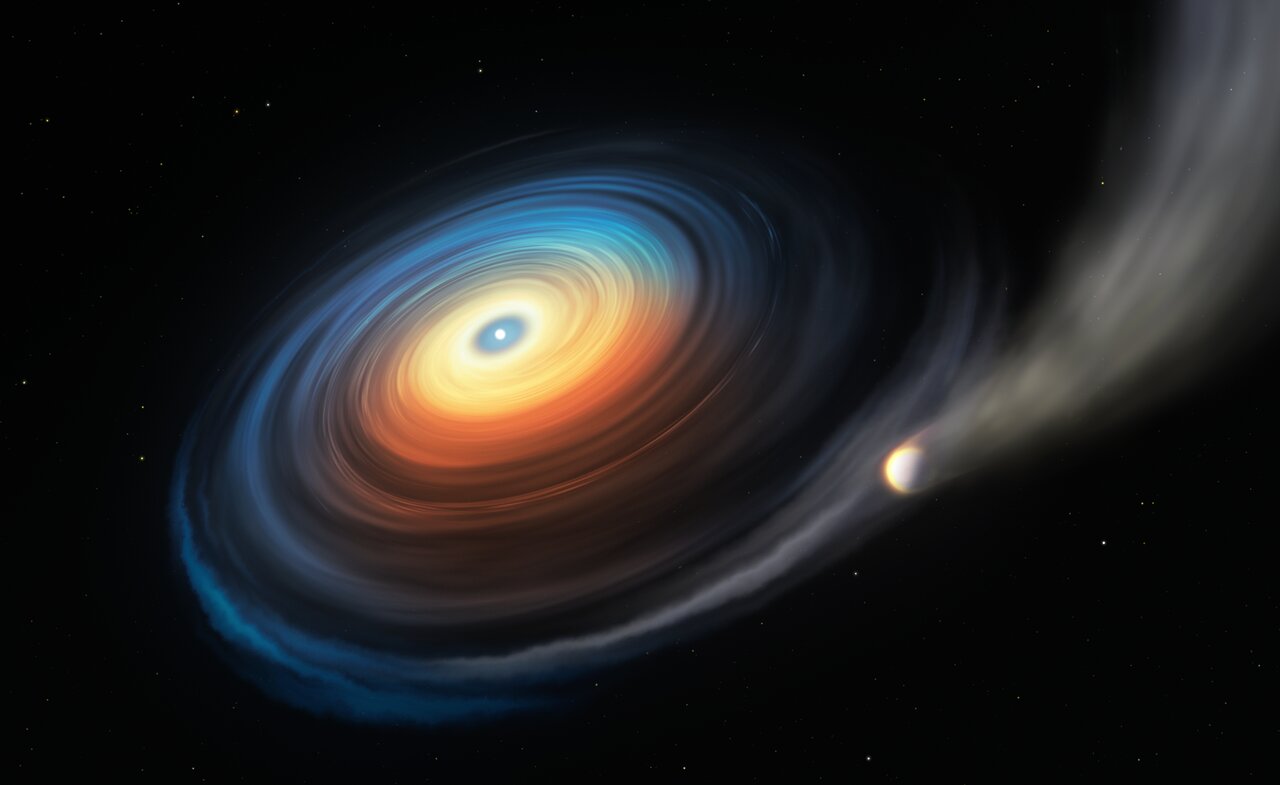Hot and cold: an ice giant orbiting a white dwarf
In a few billion years, when our Sun has exhausted its supply of fuel, it will first turn into a red giant and then collapse to form a white dwarf. Some planets of our Solar System will probably survive this time (if they’re not flung out into deep space). Astronomers know this will happen – theoretically. But until now, nobody had ever found a white dwarf with a planet in orbit around it.
So, it’s understandable why researchers are so excited about the discovery of WDJ0914+1914, which is located in the constellation Cancer about 1500 light-years away. “It was one of those chance discoveries,” says the researcher Boris Gänsicke from the University of Warwick in the United Kingdom. The research group that he leads inspected about 7000 white dwarfs. With WDJ0914+1914, they noticed some peculiar features. By analyzing the slight oscillations in the starlight, the researchers found traces of chemical elements in quantities that nobody had ever observed in a white dwarf before. “We knew that there had to be something exceptional going on in this system and speculated that it might be related to some type of planetary remnant.”
The researchers were able to confirm this speculation, as they reported in an article in Nature, with the help of the X-Shooter-Instrument of the European Southern Observatory’s (ESO) Very Large Telescope in the Chilean Atacama desert. They found hydrogen, oxygen, and sulfur close to the white dwarf, and the scientists also determined that these elements must be located in a disk made of gas that is not coming from the star itself, but instead falling in toward the star.
“It took a few weeks to figure out that the only way to make such a disk is the evaporation of a giant planet,” says Matthias Schreiber from the University of Valparaiso in Chile, who numerically simulated the past and future evolution of this system. The detected quantities of hydrogen, oxygen, and sulfur showed similarities to the deep atmospheric layers of ice giants, such as Neptune and Uranus. Imagine such a planet in a close orbit around the white dwarf. The constant bombardment of strong radiation from the star would strip away the outer layers of the planet and this material would swirl toward the star, forming a disk like that detected around WDJ0914+1914.
The white dwarf would have to be small and extremely hot at 28 000 °C. The planet itself, in contrast, is cold and large – twice as big as the star, which it orbits once every ten days at a distance of 10 million kilometers (Earth-Sun: 150 million kilometers). A portion of its atmosphere is streaming at a rate of 3000 tons per second toward the star. This disk of swirling material is what makes the otherwise-hidden, Neptune-like planet detectable.
“This is the first time that we were able to measure quantities of gases like oxygen and sulfur in the disk, which provides clues to the composition of exoplanet atmospheres,” says Odette Toloza from the University of Warwick, who developed a model for the gas disk surrounding the white dwarf. “The discovery also opens up a new window to the final fate of planetary systems,” adds Gänsicke. During WDJ0914+1914’s red giant phase, the planet’s current distance would put it deep inside the interior of the star – which is very unlikely. It probably worked its way closer to the star only after it had become a white dwarf. For that to happen, however, it would need the gravitational help of other planets, which means that more than one planet must have survived the demise of its host star.
